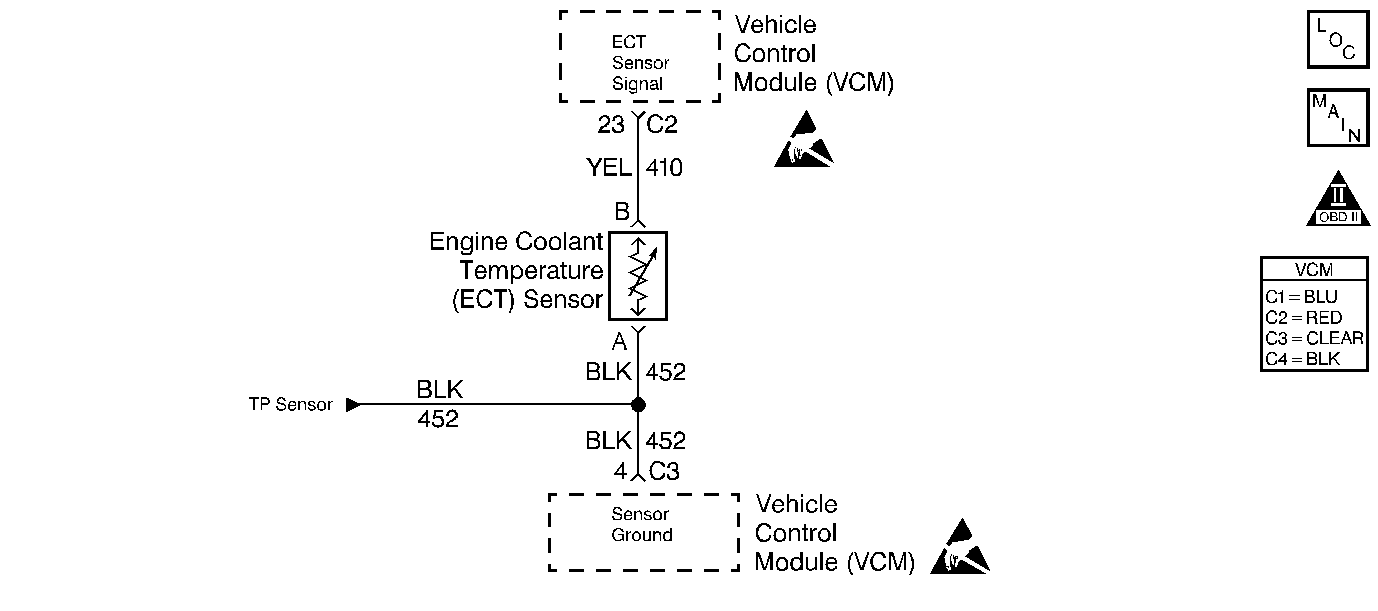
Circuit Description
The Engine Coolant Temperature (ECT) sensor is a thermistor immersed in the intake manifold cooling system passage. The VCM applies a voltage on the 5 volt reference circuit to the sensor. When the engine is cold, the sensor (thermistor) resistance is high; therefore, the VCM senses a high signal voltage, and the VCM indicates the coolant temperature. As the engine warms, the sensor resistance becomes less and the voltage drops indicating the high coolant temperature. At the normal engine operating temperature (85°C to 95°C), the voltage measures about 1.5 to 2.0 volts. This DTC is a type D DTC.
Conditions for Setting the DTC
Engine run time is greater than 5 seconds.
Action Taken When the DTC Sets
The VCM stores the DTC in History if the VCM detects an intermittent problem.
Conditions for Clearing the MIL/DTC
The VCM turns OFF the MIL after 3 consecutive driving trips without a fault condition present. A history DTC will clear if no fault conditions have been detected for 40 warm-up cycles (the coolant temperature has risen 22°C (40°F) from the start-up coolant temperature and the engine coolant temperature exceeds 71°C (160°F) during that same ignition cycle) or the scan tool clearing feature has been used.
Diagnostic Aids
A poor connection or an open in the 5 volt reference circuit or the ECT sensor ground circuit results in a DTC P1115.
The scan tool displays the engine temperature in degrees centigrade. After the engine is started, the temperature should rise steadily to about 90°C then stabilize when the thermostat opens.
Use the Temperature vs. Resistance Value scale in order to test the coolant sensor at various temperature levels in order to evaluate the possibility of a skewed or mis-scaled sensor. A skewed sensor could result in poor driveability complaints. Refer to Temperature vs Resistance .
